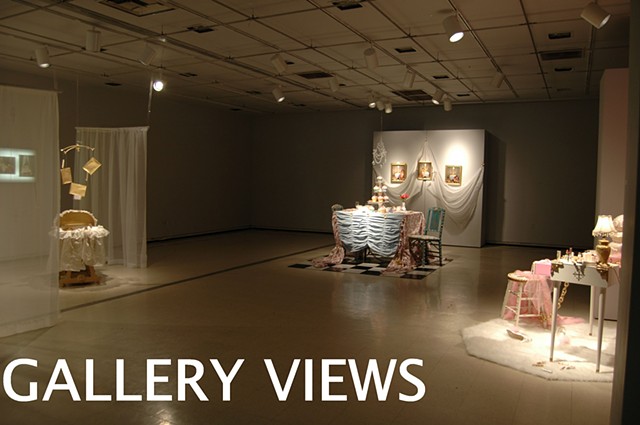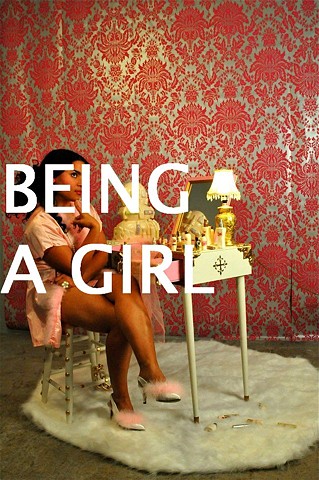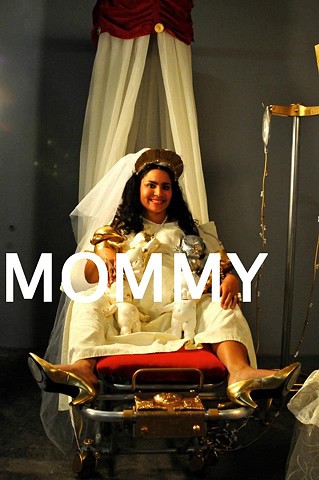Surviving the Quarter Life Crisis: Emmanuelle Wambach Thesis Exhibition
"Surviving the Quarter Life Crisis": Emmanuelle Maryse Wambach M.F.A. Thesis Exhibition -Kipp Gallery, Indiana University of Pennsylvania, December 6-13, 2011
The inspiration for my Thesis exhibition came while I was reading the book Quarter Life Crisis: The Unique Challenges of Life in Your Twenties. The Quarter Life Crisis (QLC), is a recent sociological phenomena characterized by a stressful period in early adulthood brought about by changing responsibilities and growing societal expectations. After graduating from college most people feel an overwhelming responsibility to find the next step in life and become successful. Young women experiencing QLC feel pressured by television, movies, magazines, and advertising to be a perfect woman. According to Abby Wilner and Alexandra Robbins, who coined the term QLC in the early 2000s, the ideal woman of today should be feminine, poised, confident, beautiful, the perfect mother, wife, scholar, career woman, lover, and feel fulfilled in all of these roles. My work is about confronting these ideals
In my installations and photographs I combine my own QLC experiences with the archetypes of the sexy pinup girl and the perfect wife and mother. I exaggerate their attributes to make a humorous and disturbing parody of the ideal woman. My work reveals through distortion, humor, and feminine exploitation, the pressure young women feel to fulfill these multiple roles every day.
My thesis work combines mixed media and ceramic artifacts with photographs of created scenes. By presenting photographs depicting usually private events, the viewer becomes a voyeur, a representation of the scrutinizing eye of society towards this ideal woman. With each installation I create a fantasy scene to match this illusory woman. My use of altered found objects, obviously faux opulent finishes, and my ability to craft some artifacts from unexpected media, such as clay, adds to this fantasy. The excessive use of seemingly extravagant imagery and artifacts demonstrates the absurdity of trying to embody a fantastic ideal. The ideal woman isn’t real, and neither are the objects surrounding her. Just as the palace courts of 18th century Europe used lavishness to disguise the real troubles of the day, my combination of opulent Rococo imagery and techniques, joined with my created, found, and ceramic objects, serve to create a façade of perfection which hides the more serious issues of the unattainable ideal and the pressure, scrutiny, and inadequacy felt by many young women to become this perfect woman.



